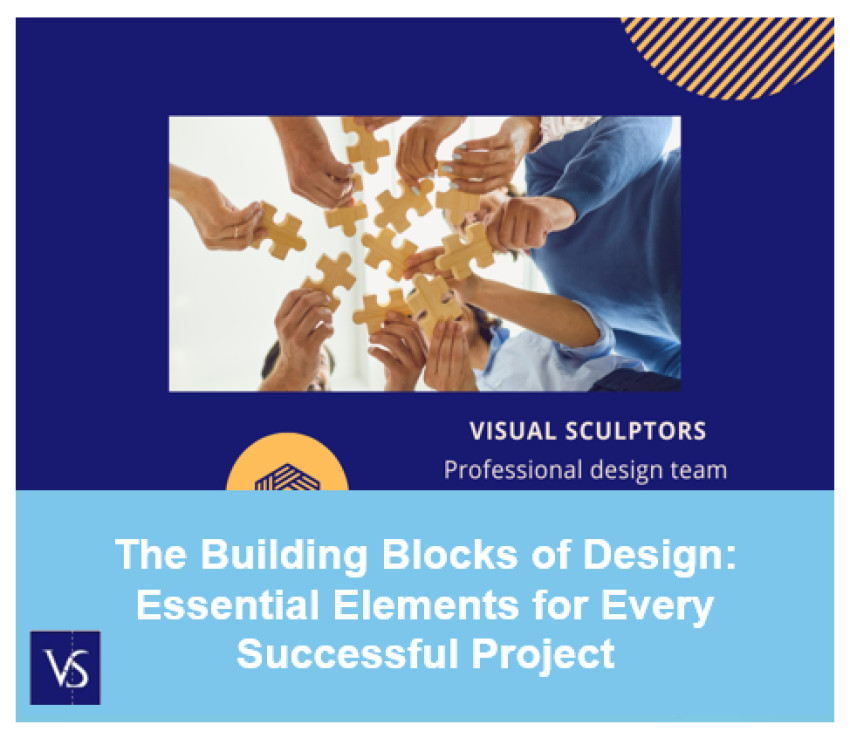
Introduction
The success of any design project relies heavily on its foundation, which is built upon the essential elements of design. These elements serve as the building blocks that guide the creation and execution of a successful project. In this introduction, we will explore the fundamental principles that every designer must understand to achieve their desired results. From colour theory to typography, layout to balance, we will delve into the importance of each element and how it contributes to the overall aesthetic and functionality of a design. By mastering these key components, designers can create visually appealing and impactful projects that effectively communicate their intended message. So let us begin our journey through the essential elements of design and discover how they are crucial to the success of any project.
1.Clear and cohesive visual hierarchy.
Is crucial in creating effective and visually appealing designs. It refers to the organization and arrangement of visual elements in a way that guides the viewer's eye and communicates the intended message. This hierarchy helps to establish a visual flow and directs the viewer's attention to the most important elements on the page. A strong visual hierarchy can greatly enhance the understanding and impact of a design, making it more memorable and engaging. By using elements such as size, colour, and placement, designers can create a clear and cohesive hierarchy that effectively conveys the desired message and creates a visually pleasing experience for the audience.
2. Thoughtful use of colour.
Is a crucial aspect of any design or branding strategy. It involves carefully selecting and combining colours to evoke certain emotions and convey a specific message to the audience. While vibrant and bold colours can create a strong impact, a more subdued and harmonious colour palette can convey a sense of elegance and sophistication. It is important to consider the target audience, cultural connotations, and the overall aesthetic when choosing colours. Additionally, a well-thought-out colour scheme can also enhance the functionality of a design by improving readability and user experience. By incorporating a thoughtful use of colour, businesses and brands can effectively communicate their message and leave a lasting impression on their audience.
3. Attention to typography and fonts.
Typography refers to the style, arrangement, and appearance of text, while fonts are specific styles or designs within a typeface. Choosing the right typography and fonts can greatly enhance the readability, legibility, and overall impact of a design. It is important to consider factors such as font size, weight, and spacing to ensure a harmonious and cohesive look. Professional designers understand the power of typography in conveying a message and use it strategically to create a strong visual hierarchy. Neglecting the importance of typography and fonts can result in a design that is difficult to read and fails to make a lasting impression. In short, attention to typography and fonts is key in producing a polished and effective design.
4. Effective use of white space.
Is crucial in creating a visually appealing and well-designed layout. White space, also known as negative space, refers to the empty space between elements in a design. When utilized properly, it can enhance the overall composition and draw attention to key elements. In a professional setting, the use of white space can convey a sense of sophistication and elegance. It allows for a clean and uncluttered design, making it easier for readers to focus on the content. White space can also improve readability and create a sense of balance in a design. Therefore, it is essential to incorporate white space strategically to achieve a visually pleasing and effective design.
5. Strategic incorporation of imagery.
Incorporating imagery strategically can significantly enhance the impact and effectiveness of any written or visual communication. By carefully selecting and placing images that align with the intended message, one can create a powerful and memorable experience for the audience. This technique is particularly valuable in marketing and branding, as it allows companies to establish a strong visual identity and evoke specific emotions in their target market. Moreover, in fields like literature and film, imagery can add depth and richness to the storytelling, bringing the audience closer to the characters and their experiences. Overall, the strategic incorporation of imagery is a crucial aspect of effective communication that should not be overlooked.
Conclusion
The building blocks of design are essential elements that are crucial for the success of any project. From colour and typography to layout and composition, each element plays a significant role in delivering a visually appealing and functional design. By understanding the importance of these elements and how they interact with each other, designers can effectively create impactful and successful projects. However, it is also important to continuously adapt and evolve these building blocks to keep up with changing trends and technologies. With a solid foundation of these essential elements, designers can confidently tackle any project and achieve their desired results.
Are you in need of a proficient design agency to revolutionize your forthcoming business presentation?
Visual Sculptors - Led by Ex-McKinsey designers’ team.
We eagerly anticipate the opportunity to engage with you on your upcoming presentation design project as our highly skilled design team at visual sculptors is prepared to collaborate. You may explore reputable agencies specializing in top-tier presentation design services.



